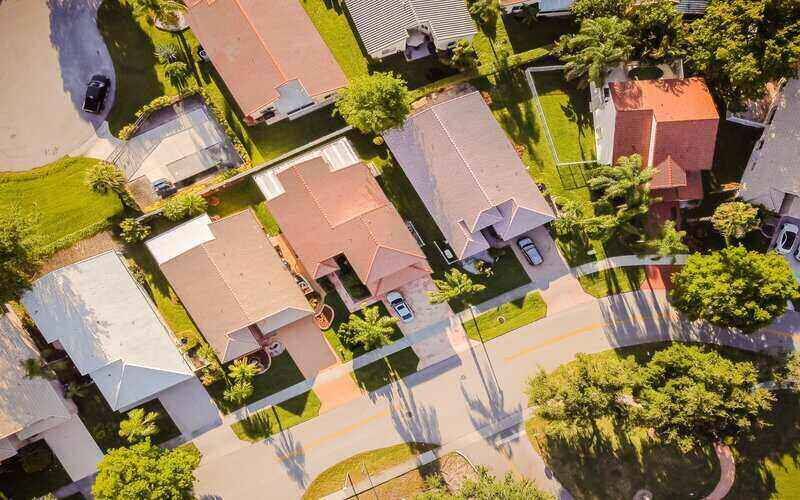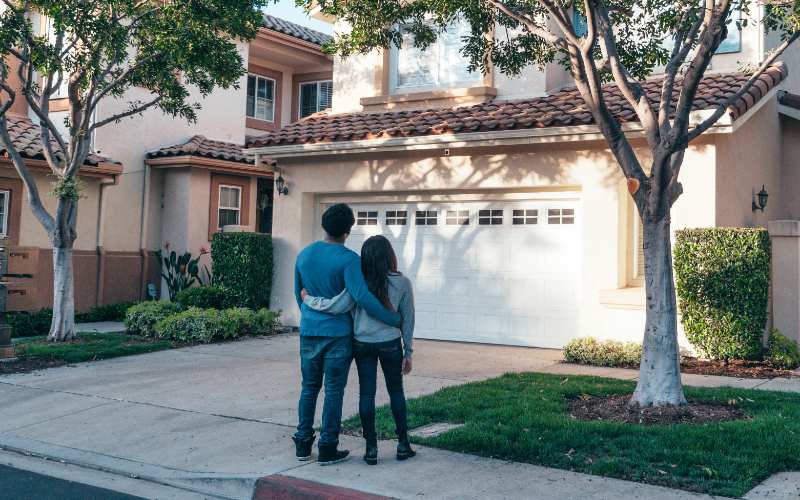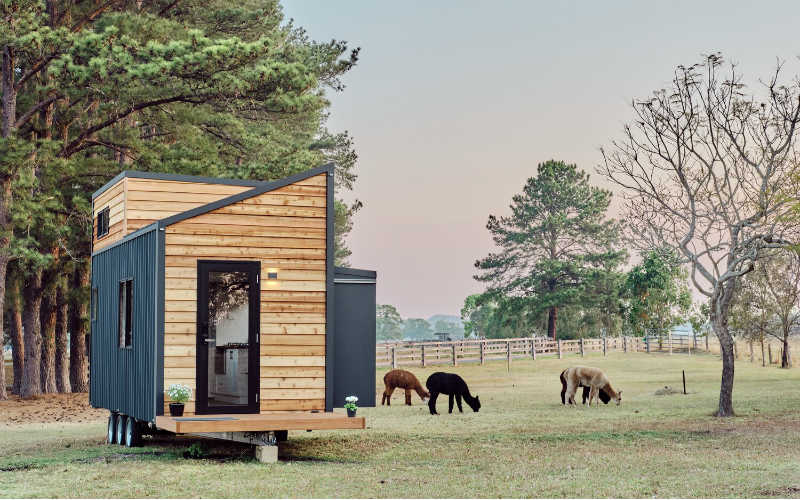CoreLogic data revealed national home prices are now down by 8.9% from their April high.
Prices across the combined capital cities fell 1.1% in the month, while outlying regions - which have performed better in this housing downturn - declined by 0.8%.
All capital cities saw prices fall in January, although Perth and Darwin remain relatively resilient as both cities are still getting over their post mining boom slumps.
The monthly fall was led by Hobart where prices slid 1.7%, followed by Brisbane (1.4%) and Sydney (1.2%).
For the first time since March 2021, Sydney’s median dwelling value dropped below $1 million.
The premium end of the housing market has led both the recent upswing as well as the current downturn.
While house price falls over the past year have been steep, every capital city and regional area is still recording home values above pre-pandemic levels.
Although CoreLogic data suggests Melbourne’s index would need to fall a further 0.4% before equalling the March 2020 reading.
| Month | Annual | Median Value | |
| Sydney | -1.2% | -13.8% | $999,278 |
| Melbourne | -1.1% | -9.3% | $746,468 |
| Brisbane | -1.4% | -4.7% | $698,204 |
| Adelaide | -0.8% | 6.9% | $646,045 |
| Perth | -0.3% | 2.7% | $559,971 |
| Hobart | -1.7% | -9.5% | $666,431 |
| Darwin | -0.1% | 3.7% | $500,228 |
| Canberra | -1.0% | -5.9% | $841,605 |
| Combined capitals | -1.1% | -8.7% | $763,110 |
| Combined regionals | -0.8% | -2.3% | $574,835 |
| National | -1.0% | -7.2% | $702,725 |
Source: CoreLogic Change in Dwelling Values Jan 2023
CoreLogic Research Director Tim Lawless said although the housing downturn remains geographically broad-based, there are signs some momentum has left the housing slump.
“The quarterly trend in housing values is clearly pointing to a reduction in the pace of decline across most regions, however at -1.0% over the month and -3.2% over the rolling quarter, national housing values are still falling quite rapidly compared to previous downturns,” Mr Lawless said.
Through January, regional housing values continued to record a milder rate of decline than each of their capital city counterparts, an evident trend through most of the downturn to-date.
“Despite easing rates of internal migration and a partial erosion of the pre-pandemic affordability advantage, regional housing values are holding up better than capital city markets,” Mr Lawless said.
"With more Australians willing to base themselves outside of the capital cities and remote working remaining a viable option across some sectors of the labour force, it’s unlikely we’ll see a mass exodus from regional markets.”
Despite an ease in the rate of decline in January, AMP Chief Economist Shane Oliver said this doesn’t necessarily signal an end in price falls.
“It’s worth noting that past periods of property price falls experienced a few gyrations in the pace of price declines before prices ultimately bottomed, for example, in the 2017-19 down cycle,” Mr Oliver said.
What’s contributing to the house price slump?
Since May last year, the RBA has lifted rates by 300 basis points to a 10-year high of 3.10% in a bid to curb red-hot inflation (7.8%).
“Rising mortgage rates are the biggest driver of the slump as the surge in fixed mortgage rates and variable rates has substantially reduced the amount new home buyers can borrow and hence pay for a home which has all weighed on demand,” Mr Oliver explained.
“Of course, it all needs to be seen in context as average home price levels have still only reversed about 45% of their surge from their pandemic lows.”
Other key key drivers include:
- Poor affordability after the prior property boom
- A rotation in spending away from goods, including houses
- Cost of living pressures which makes it harder to save for a deposit
- Poor homebuyer confidence
While the trajectory for interest rate hikes is still contested amongst economists, it’s expected the RBA will deliver another 25 basis point increase when the Board meets next Tuesday.
This is despite retail sales recording a sharper than expected fall in December - down 3.9%.
When will the housing downturn end?
Mr Oliver said national home prices could fall by another 8% in the next eight months before they bottomed out.
“We continue to expect a 15-20% top to bottom fall in home prices out to the September quarter, as the full impact of rate hikes flows through and as economic conditions slow sharply this year resulting in rising unemployment,” he said.
“Late in the year a move towards rate cuts may enable home prices to start rising.”
The big-four banks echoed similar sentiments, forecasting house prices to fall by 15-20% by the end of 2023.
To find out what the experts predict, head to our article on: Will house prices really drop by 20% in 2023?
Advertisement
Buying a home or looking to refinance? The table below features home loans with some of the lowest interest rates on the market for owner occupiers.
| Lender | Home Loan | Interest Rate | Comparison Rate* | Monthly Repayment | Repayment type | Rate Type | Offset | Redraw | Ongoing Fees | Upfront Fees | Max LVR | Lump Sum Repayment | Extra Repayments | Split Loan Option | Tags | Features | Link | Compare | Promoted Product | Disclosure |
|---|---|---|---|---|---|---|---|---|---|---|---|---|---|---|---|---|---|---|---|---|
5.54% p.a. | 5.58% p.a. | $2,852 | Principal & Interest | Variable | $0 | $530 | 90% |
| Promoted | Disclosure | ||||||||||
5.49% p.a. | 5.40% p.a. | $2,836 | Principal & Interest | Variable | $0 | $0 | 80% |
| Promoted | Disclosure | ||||||||||
5.64% p.a. | 5.89% p.a. | $2,883 | Principal & Interest | Variable | $250 | $250 | 60% |
| Promoted | Disclosure | ||||||||||
5.64% p.a. | 5.89% p.a. | $2,883 | Principal & Interest | Variable | $248 | $350 | 60% |
| Disclosure |
Image by Lesia via Unsplash

Ready, Set, Buy!
Learn everything you need to know about buying property – from choosing the right property and home loan, to the purchasing process, tips to save money and more!
With bonus Q&A sheet and Crossword!







 Bea Garcia
Bea Garcia
 Denise Raward
Denise Raward
 Harry O'Sullivan
Harry O'Sullivan

 Emma Duffy
Emma Duffy

